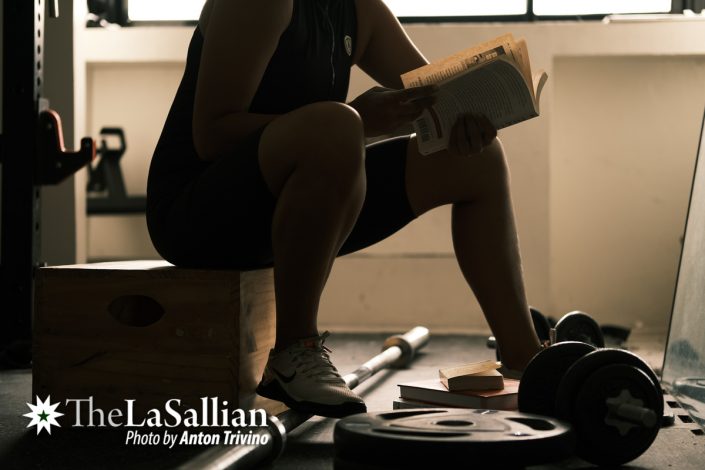After Hidilyn Diaz’s surreal performance in the Summer Games, the Philippine sports scene’s hunger for more Olympic gold medals will be hard to satiate. Though with the National Academy of Sports (NAS) taking flight to pave the way for future Olympians, gathering the young and talented junior high student athletes is a step in the right direction.
Kris Junasa, NAS’ assistant head for legal and external affairs, is confident of what NAS can provide, “If you want to pursue a career or profession in sports, it’s very important to be in NAS.”
NAS aims to deliver “quality secondary education and top-notch sports development for rising talents in the country.” “That’s why NAS is here—so we could find a way to give [students] a conducive [learning] environment [where they] could focus both on their education and their sports development,” he remarks.
Situated in New Clark City in Tarlac, NAS hopes to cultivate homegrown talents and to prepare them for collegiate and even professional competitions in the local and international scenes.
Bold beginnings
Despite the pandemic’s end still unseeable, the institution was still able to formally open its doors to students last September 13 via remote learning modalities. For the entirety of their stay at NAS, students will be undergoing a specialized sports-oriented curriculum and will be provided an environment “responsive to the needs of the student-athletes in academics, sports training, and character development.”
Training athletes early on is one of its goals, but NAS also aims to bring them to higher levels academically. Forming holistic student athletes will be challenging, but NAS believes it is capable of fostering both mind and body. “If I were an athlete or probably [had] just graduated [from] grade school and wanted to pursue sports…[I’d] probably [apply at] NAS,” Junasa adds.
He reiterates that with NAS determined to give their students “different opportunities”, they plan to expose them to tracks not limited to sports. He explains, “The goal is to make sure that we prepare them for the different tracks available so that they could pursue the degree or the profession that they want.”
International exposure will also be within reach for these future stars of Philippine sports as NAS students will be given various opportunities to compete abroad and to join in international exchange programs with other educational institutions. These will enable them to experience the feeling of training and competing against athletes from other countries. However, opportunities like these will only be allowed when travel restrictions due to COVID-19 are lifted.
With the area designed to be a “green and climate-resilient learning center and training ground,” the first phase of construction of academic and administrative buildings as well as sports facilities is still ongoing but is expected to be finished by February 2022.

Apart from NAS’ educational program, access to the newly built world-class sports facilities awaits their students-to-be. “Giving our students the ability to train in world-class facilities, international standard facilities…we can make sure that…‘yung paglalaruan ng mga bata will be at par with what are in the international scene,’ Junasa highlights. With a P557.8-million budget for the first phase of NAS, these facilities are indeed something to look forward to.
Along with these, preparations include readying scholarships with stipends as well as providing board and lodging for their incoming students. NAS is determined to provide more than just education, Junasa shares that “[if] you have the basic necessities, you have food, clothing, your house, [so] they won’t have to worry about their basic necessities, an actual dormitory will be there on campus. May pagkain ka na, tirahan, libreng tuition.” As this comes to fruition, NAS will be one of the few that will bestow this one-of-a-kind of opportunity for the young athletes of the country.
(You have food, housing, and free tuition)
In the first batch of students who entered the academy, NAS accepted 64 junior high school students from five regional clusters: the National Capital Region, North Luzon, South Luzon, Visayas, and Mindanao. Eight sports will be the focus for Phase 1, namely aquatics, athletics, badminton, gymnastics, table tennis, taekwondo, judo, and weightlifting. And prior to official acceptance, student athletes needed to prove they could excel in their respective sports through an application. This said application or profiling includes gathering evidence of participation and achievements in national sports competitions held by the Department of Education School Sports Division, Philippine Sports Commission, Philippine Olympic Committee, or the National Sports Association. Their coaches’ recommendation is also among the requirements.
Looking ahead
World-class grassroots and sports development are now in sight for the Philippines. For NAS, success is not all about medals. They see success starting from the small achievements of their homegrowns, such as participating in higher levels of sports competitions, getting more athletes into qualifiers, and bringing more talents to sports meets and international competitions like the Olympics. From there, Filipinos will slowly see the bigger picture of the success brought by NAS, its students, and its graduates.
After Phase 1, NAS also ensures that they intend to branch out to more sports and campuses across the country.
As the young guns will slowly gain recognition here and abroad, NAS expects them to inspire younger generations to become changemakers in Philippine sports.
